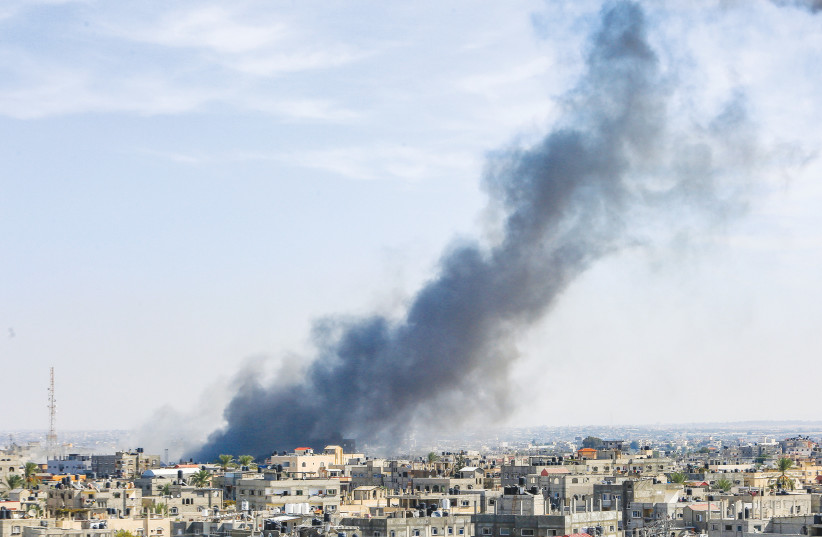Israel is continued to strike at terror sites in Gaza. This includes in northern Gaza such as near the Shati camp, Shujaiyya, Jabalia and other areas. IDF spokesperson Rear Admiral Daniel Hagari said Israel also continued to warn Gazans to remain in southern Gaza where they can access humanitarian aid.
Israel has struck Hamas members and it will continue to do so. Meanwhile the IDF is preparing for the ground incursion that is expected to come. This includes preparing as many units as are needed with training refresher courses in such things as urban combat. It includes training up reservists who have flocked to their units as well. Israel called up around 300,000 people after October 7.
In general Monday and Tuesday were relatively quiet days in Israel. There was not as much rocket fire from Gaza and it also appears the number of air strikes in Gaza have been reduced. Nevertheless there have been hundreds of strikes in the last two days. Israel also continues to operate in the north to defend against threats. Hezbollah has deployed anti-tank missiles, rockets, mortars and small arms to threaten Israel. It has also used drones. Israel continued to eliminate terrorist squads. The IDF said that five terrorist squads had been eliminated over the last day.
The Alma Research and Education Center noted in a post that “the IDF announced today that since the start of the war in the northern arena, there have been 2 infiltration attempts, 200+ rockets & mortar launches, and 30+ ATGM attacks.” There have also been several attempts by Hezbollah or other groups to infiltrate Israel using drones or UAVs. One incident occurred on October 22 and also on the 23 and there was another incident on October 14. Iranian-backed proxies have also used drones to attack US forces in Iraq and Syria. The Houthis in Yemen, which are backed by Iran, have also used drones.

Around midday the IDF said that “during combined operational activities, IDF tanks, helicopters and artillery struck anti-tank missile launchers and observation posts in which Hamas terrorist operatives were located. Simultaneously, IAF helicopters and fighter jets struck terrorist infrastructure located in a multi-story building, as well as additional anti-tank infrastructure. During the activity, IDF forces killed a number of Hamas terrorists in the Gaza Strip.”
Continuing strikes against terror targets
The IDF carried out at least 400 strikes against terror targets overnight, in addition to the 320 it struck between Sunday and Monday. It is not clear the overall number of strikes, but it is likely approaching ten thousand. This can be extrapolated from the fact Israel said it had used 6,000 munitions by October 12 of the war. Now we are 12 more days on from that day. Hamas and other terror groups have also fired thousands of rockets, the number of which may also approach ten thousand. Israel has not published interception data on the rocket fire in this war, unlike most previous wars.
Day 18 of the war saw the visit of the French President Emanuel Macron. In addition the US continued to bolster forces in the region amid reports that Israel has been cautioned against a ground operation taking place without a plan for what comes next; and amid reports that the US is concerned about a wider regional conflagration. Overall, threats from Iran has been reduced in Iranian official media and rhetoric over the last two days.
While Hezbollah continues to announce casualties it also appears to have reduced its attacks. Hezbollah may have lost as many as 30 terrorists during the multi-week conflict. In the Gulf news reports are increasingly wondering what will happen to Gaza after the conflict. Al-Ain media discusses how the Palestinian Authority might return to Gaza. Lebanon has also reportedly put together an “emergency” plan in case of a larger conflict in Lebanon, in order to help civilians.
